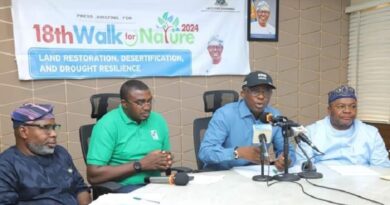Assessing the downstream socioeconomic impacts of agroforestry in Kenya
Scientists from World Agroforestry (ICRAF) have found modest, yet statistically significant, improvements in the livelihoods of farmers involved with an agroforestry-development program in Kenya.
‘Agroforestry has been widely claimed to improve the livelihoods of smallholding farmers, rehabilitate degraded landscapes, and enhance the services provided by Nature,’ said Karl Hughes, leader of the study and head of monitoring and evaluation at ICRAF. ‘Yet, evidence supporting these longer-term impacts has been limited. Our study set out to help fill that gap.’
The research team found that an agroforestry-development program run by Vi Agroforestry, a Swedish NGO, had improved farmers’ incomes from agroforestry products, increased access to fuelwood, and raised milk yields for dairy farmers.
They also found that the program modestly increased asset holdings, particularly among households represented by women.
Using a quasi-experimental impact evaluation design informed by a theory-based and mixed-methods framework, the team investigated the program’s selected intermediate and final outcomes. The nine-year program promoted the use of agroforestry in large sections of Bungoma and Kakamega counties in Western Kenya.
They compared households belonging to 432 pre-existing farmers’ groups operating in 60 villages and 61 matched comparison villages. They also carried out semi-structured interviews with a sub-sample of 40 purposively selected program participants.
Despite evidence of variable program exposure and agroforestry uptake, they found that the program’s impact had been felt in various areas.
The study addresses a key gap in the literature on the longer-term effects of agroforestry programs and integrated agroforestry systems. This evidence gap has likely persisted to date simply because generating rigorous impact evidence is particularly challenging when it comes to agroforestry: the timeframes within which such impacts are expected to manifest are typically long and non-linear; there is no one particular agroforestry system suitable for all agroecological, social and economic contexts; agroforestry is generally taken up by farmers with varying levels of intensity, not as a binary ‘technology’; and agroforestry promotion tends to be bundled with the promotion of other agricultural practices.
‘While in no way conclusive,’ said Hughes, ‘our supplementary mediation analysis indicates that the relatively greater uptake of agroforestry in the program area was likely at least partly responsible for the improvements. In consumption expenditure per capita terms, our estimated average “asset accumulation effect” on Vi Agroforestry-affiliated households is USD 0.13. This is just under USD 50 per year per capita or about 3% of overall household consumption expenditure. This is not huge, transformative impact, but it should not be entirely dismissed either. Moreover, these average figures mask the variation experienced across households. Given that we captured data along several key dimensions of Vi Agroforestry’s theory of change, we offer possible insights why this downstream impact failed to materialize in a more significant way.’
Specifically, while the researchers found that the program achieved several intermediate outcomes, such as better income from the sale of agroforestry products, fuelwood access, and milk yields, for many households, it did not do so for all.
For example, only just over a third of households in the program area reported agroforestry sales greater than USD 10 in the previous year. Moreover, while milk yields did increase to a greater extent for dairy producers in the program area, only about half self-reported experiencing such an increase.
And when the researchers moved further down the causal chain to agroforestry adoption, there was a similar trend: there was an increase from the baseline period but nothing particularly dramatic. Similarly, for exposure to agroforestry specialist advice, the rates of exposure were significantly higher in the program area. Yet, again, this did not appear to be the case for many households.
‘It is difficult to know with certainty whether the result would have been different if the uptake of agroforestry had been more substantive among the farmer groups targeted by Vi Agroforestry,’ said Hughes, ‘particularly considering that such uptake also took place in the comparison area, albeit to a more limited extent. However, we have reasons to believe that it may very well have been: we found that asset accumulation took place to a much greater extent among “high adopters” compared to “low adopters” in the program area, even after undertaking efforts to control for potential sources of unobserved bias.’
Development and research-for-development organizations areunder increasing pressure to ‘deliver’ more impact for larger numbers of ‘beneficiaries’ and with fewer resources. This is in tension with what the team found.
‘There is a need for ongoing engagement, iteration, adaptation and addressing issues in the wider system,’ said Hughes. ‘It is noteworthy that Vi Agroforestry moved away from its more intensive extension approach in 2004 to the “farmers’ group” intervention model on which our study is based. This was, in part, for perceived cost-effectiveness reasons. While there are certainly merits associated with Vi Agroforestry’s current implementation model — for example, it potentially fosters less dependency — it may have moved too far away from its previous approach where there was more direct and ongoing engagement with farmers.’
In an era where social and environmental impact is expected on a larger scale and at lower costs under the banner of ‘value for money’, this observation is worth considering if development programs are to achieve greater impact.
Many of the more complex and transformational changes we seek to bring about in the agriculture and natural resource management sectors are unlikely to be achievable through superficial training, extension visits or input distributions. To ensure such impact at scale, there is clearly a need to re-think how we pursue the actual process of expanding the scale of successful agricultural technologies.




